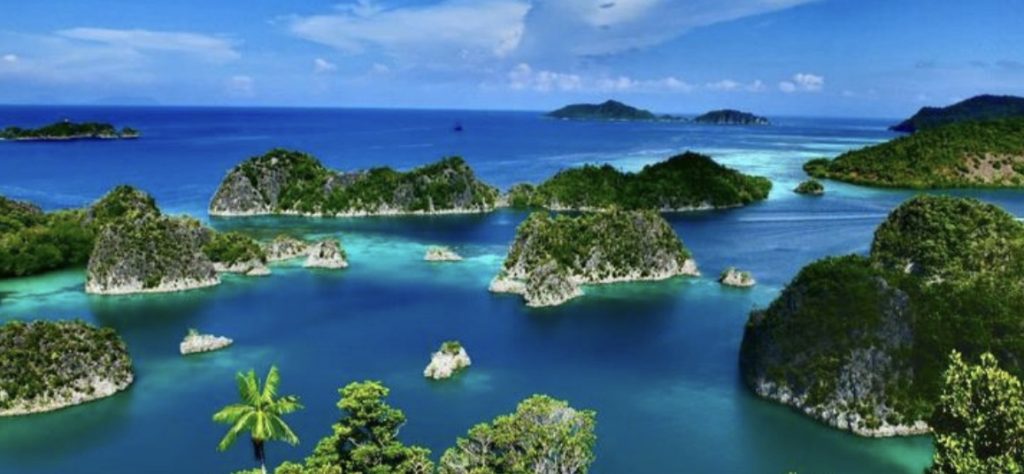Raja Ampat, Sketsa.id – Tucked away in Indonesia’s Coral Triangle, the archipelago of Raja Ampat is a living masterpiece of nature. With its crystalline turquoise waters, lush limestone karsts, and coral reefs teeming with life, it offers a glimpse into a world that feels untouched by time. Home to more than 1,700 fish species and 75% of the world’s known corals, Raja Ampat is not just a diver’s paradise—it’s a global treasure.
But this paradise is in peril.
Beneath the Surface: Mounting Threats
While the allure of Raja Ampat is undeniable—from graceful manta rays gliding through the deep to secret lagoons hidden among the islands—its delicate ecosystems are under siege. The culprits are numerous: illegal fishing, plastic pollution, and unsustainable tourism all contribute to the region’s environmental strain.
Yet one threat looms larger and more destructive than the rest: reckless nickel mining.
Driven by rising global demand for minerals used in batteries and electronics, certain mining companies have descended upon Raja Ampat’s outer regions, clearing forests, polluting waterways, and damaging marine habitats with little regard for the long-term consequences. The environmental scars left behind threaten not just the ecosystem, but the livelihoods and heritage of the indigenous communities who call this place home.
The Silence—and Complicity—of Power
In theory, Indonesia has taken steps to protect Raja Ampat. Marine protected areas and sustainability guidelines are on the books. In practice, however, enforcement is weak. Environmental violations—especially those linked to mining operations—often go unchecked unless they spark a public outcry.
Social media has become the unofficial regulator. Time and again, meaningful government response only arrives after viral images of pollution, dying coral, or devastated coastlines embarrass officials into temporary action. This reactive approach signals a disturbing trend: policies that exist for appearances, not for impact.
The Cost of Inaction
This cycle of neglect carries a heavy cost. Coral reefs are dying from sediment runoff, rivers are poisoned, and fish populations are plummeting. Local communities—who have long practiced sustainable fishing and land stewardship—are being sidelined by corporate interests with little oversight or accountability.
Activists and scientists continue to document the damage, but their calls for lasting intervention are too often ignored. As long as government action depends on public outrage rather than proactive governance, Raja Ampat’s future remains uncertain.
What Must Be Done
Raja Ampat’s beauty is not infinite. Without urgent action, its reefs, forests, and wildlife could be lost within a generation. But hope remains—if meaningful steps are taken now.
1. Hold mining companies accountable with transparent investigations and real penalties for environmental harm.
2. Empower and support local communities to lead conservation efforts.
3. Educate tourists on sustainable practices that protect rather than degrade the environment.
4. Commit to consistent enforcement, not just media-driven gestures.
5. Invest in restoration of damaged ecosystems to repair what has been lost.
A Legacy Worth Saving
Raja Ampat is more than a picturesque destination; it’s a symbol of what the natural world can be when left to thrive. But it’s also a test—a measure of whether we can balance development with preservation, economic gain with ecological wisdom.
If we fail, Raja Ampat could become another cautionary tale. But if we succeed, it can stand as proof that natural wonders need not be sacrificed for short-term profit.
The choice is ours—and time is running out.





